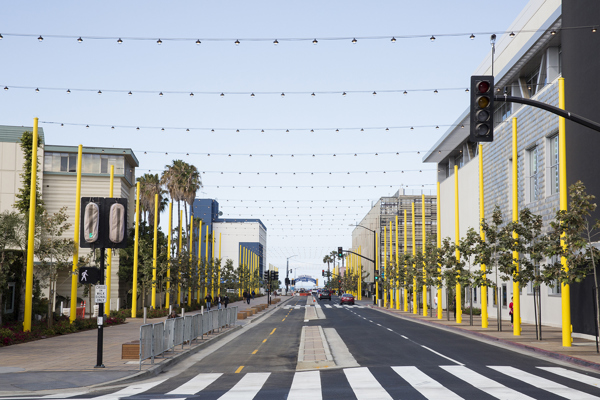Inside the Capital Improvement Program Budget
June 15, 2018 5:30 PM
by Delana Gbenekama

Every two years, Santa Monica releases a capital improvement program (CIP) budget that identifies priority infrastructure projects and lists the accompanying funding details. On June 12, 2018, the City Council approved the $301.8 million Capital Improvement Program Fiscal Year 2018-20 Biennial Budget, of which $186.4 million will go toward projects in fiscal year 2018-19 and $115.4 million will go toward projects in fiscal year 2019-20.
Just as we must regularly service our cars and repair our homes, allocating money to keep our infrastructure in good condition prevents costly repairs down the line and keeps our streets and buildings safe and functional.
The 2018-20 CIP budget includes 100 projects – many are ongoing infrastructure maintenance efforts while others are major one-time expenses. These projects will maintain and improve City streets, replace water mains, and build and update vital facilities and amenities we all rely on from the stations that Fire personnel operate out of to save lives, to the libraries that help foster learning, to the beach and parks we flock to for recreation.
The CIP budget, for the first time, is directly tied to Santa Monica’s Framework for a Sustainable City of Wellbeing, advancing five of the seven outcome areas. The projects included in the CIP budget primarily support the Place and Planet outcome area by developing, protecting and maintaining City-owned infrastructure. The projects also advance the Health, Safety, Governance and Community outcome areas by treating and delivering clean drinking water to residents, making streets safer for pedestrians and cyclists, and implementing technological improvements that allow us to do City business more efficiently. The capital budget will also continue to advance Council’s strategic goals, in particular creating a new model of mobility. More than 20 mobility-focused projects in the CIP budget will improve bicycle and pedestrian safety infrastructure and will implement adopted plans to complete bicycle, pedestrian and transit networks.
Below are summaries of projects that fall under each of the five Framework outcome areas covered in the CIP budget. We encourage you to read the CIP budget to learn more about the projects that will not only effectively maintain our existing assets but will also keep the city safe and functional for the benefit of all who live, work and play in Santa Monica.
PLACE AND PLANET
The Sustainable Water Infrastructure Project will allow the City to capture up to 4.5 million gallons of storm water from any single storm event for treatment and reuse for non-potable purposes such as toilet flushing. This will help improve beach water quality and reduce the amount of energy and greenhouse gas emissions associated with producing and transporting imported water. More details on page 134.
HEALTH
The Civic Center Multipurpose Sport Field Project addresses a need for additional field space and will be used by Santa Monica High School sports teams and other community sports organizations. The field is included the adopted 2005 Civic Center Specific Plan. More details on page 42.
SAFETY
The Safe Routes to School – Pedestrian Improvements at Six Schools Project will improve school access and safety near Edison Language Academy, SMASH, John Muir, McKinley Elementary, Grant Elementary and Franklin Elementary. These needs were identified during Walk Audits conducted in the spring of 2017. More details on page 95.
GOVERNANCE
The Bus Replacement Program ensures the consistent delivery of safe and affordable mobility to the community. In FY 2018-19, Big Blue Bus (BBB) will receive 20 near-zero emissions 40-foot Gillig CNG buses that were ordered in 2017. BBB’s next order of buses, which will be zero-emissions battery buses, will be purchased in FY 2018-19 and placed into revenue service in FY 2019-20. More details on page 24.
COMMUNITY
The Council Chambers Audio-Visual System Project will improve the public’s meeting experience by upgrading outdated equipment, including the technology associated with the closed-captioning system and podium, and the process associated with electronic voting and public requests to speak. More details on page 37.
CLICK HERE for the complete CIP budget
Authored By
Delana Gbenekama
Equity and Communications Program Manager